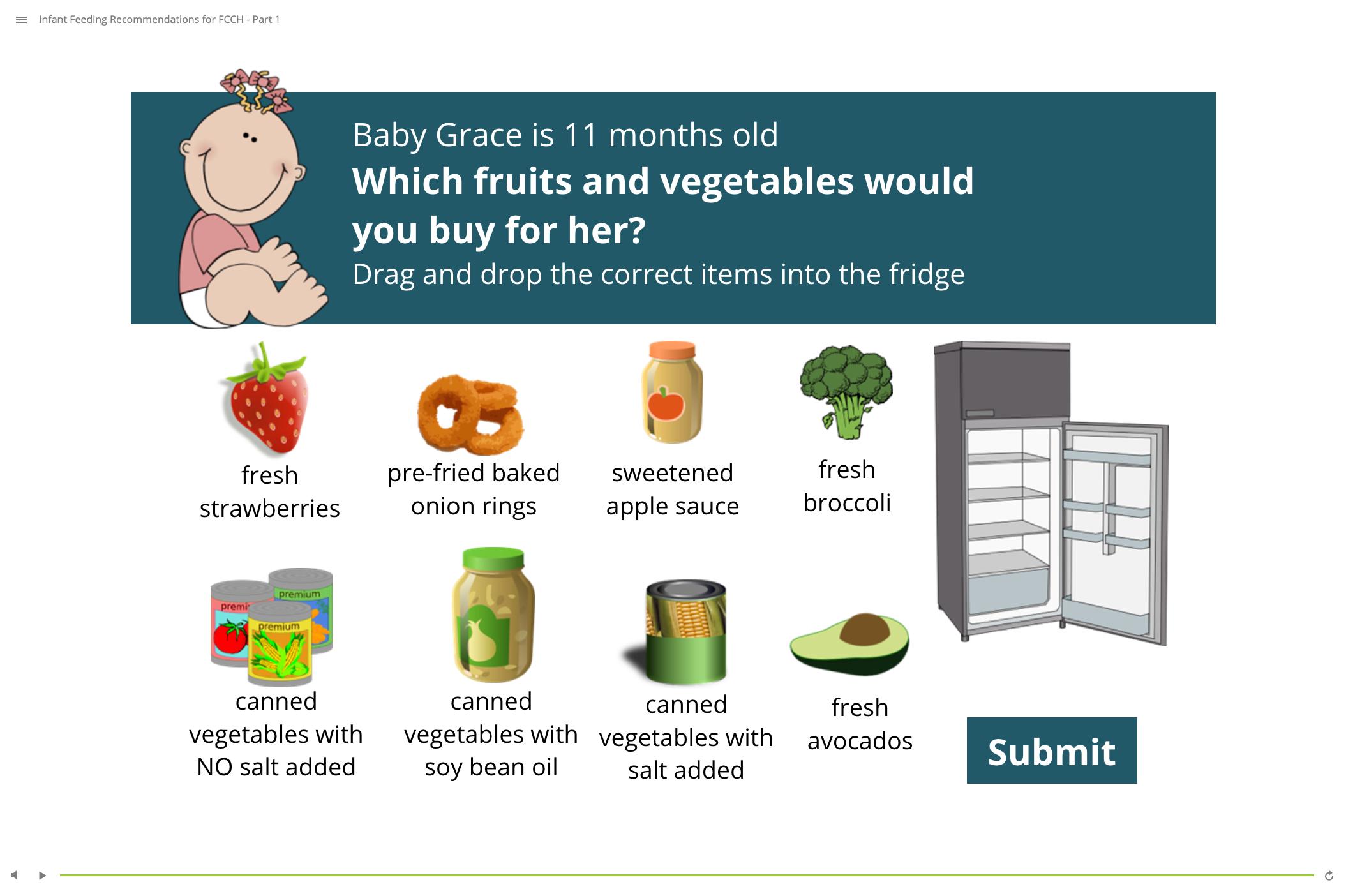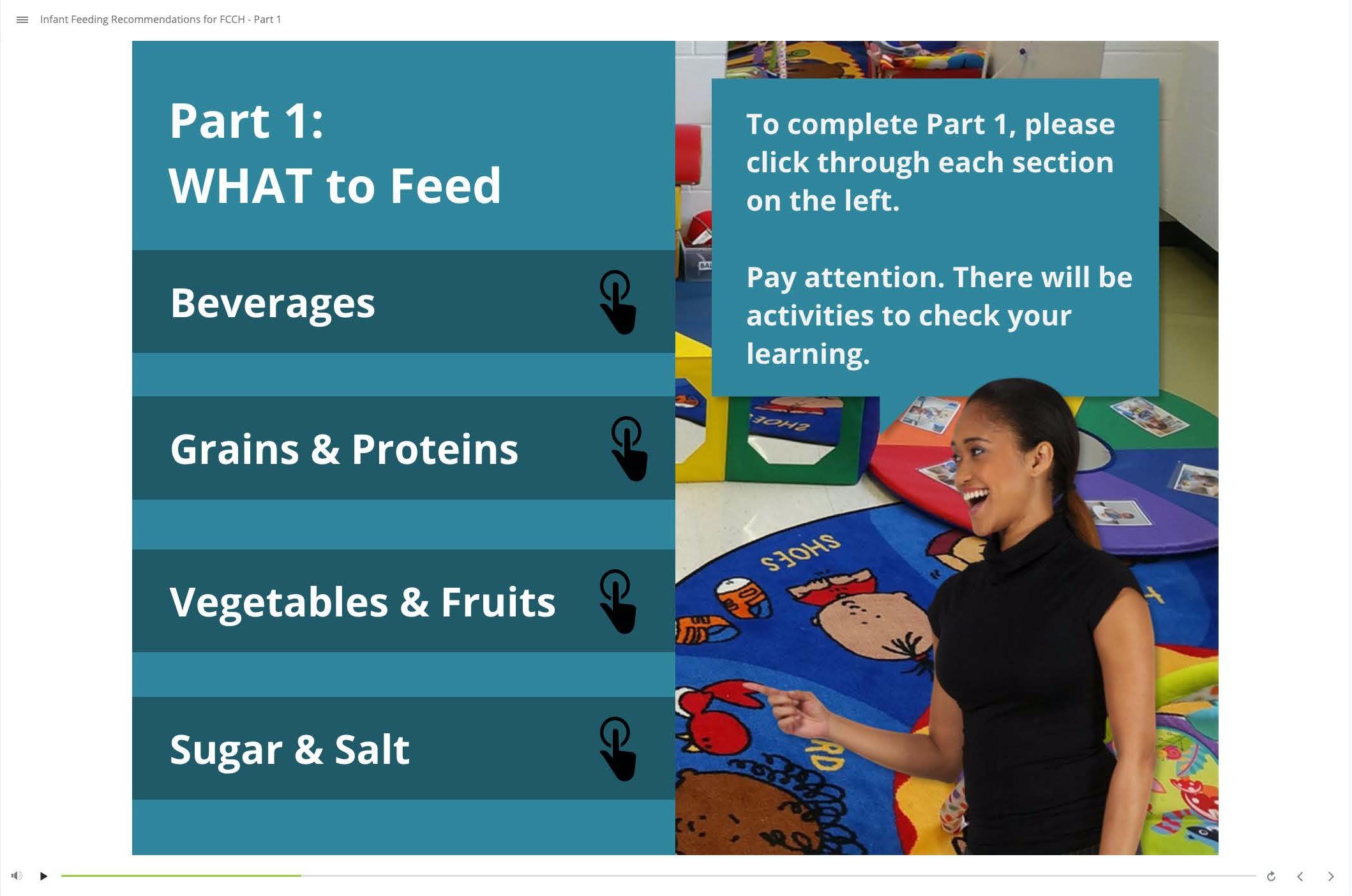Infant and Toddler Feeding Recommendations for Family Child Care Home Providers
Complete the online trainings today!
Sign up for a free eXtension online Campus account to complete the trainings in English or Spanish at no cost.
(1) Create an online account:
- Go to extension.org, and click the ‘create new account’ button.
- You will need to create a username and password, and provide your email address, first and last name, the state, county and zip-code you live in, and indicate if you are an Extension or USDA employee (if you are not sure, then select ‘no’).
- After entering the required information and clicking ‘create my new account’, you will receive an email to verify your account. Verify your account by clicking the link sent to the email address you provided.
- Be sure to save your username and password in a secure place where you can easily access it.
(2) Enroll in the online trainings:
Now that you have created an account, you can enroll in the online trainings by clicking the links for your preferred language.
These trainings were developed by the University of California (UC) Nutrition Policy Institute, UCSF California Childcare Health Program, UCSF School of Nursing, UC Merced, and UC Cooperative Extension by a grant provided by the University of California, Division of Agriculture and Natural Resources.
Suggested citations:
- Lee DL, Keeton V, Alkon A, Neelon M, Diaz Rios K, Srivastava D, Strochlic R, Olague C, Vela R, Sanchez M, De la Vega N, Ritchie LD. (2022, June 1). Infant Feeding Recommendations for Family Child Care Home Providers. eXtension Campus. https://campus.extension.org/course/view.php?id=1788&lang=en_us
- Lee DL, Keeton V, Alkon A, Neelon M, Diaz Rios K, Srivastava D, Strochlic R, Olague C, Vela R, Sanchez M, De la Vega N, Ritchie LD. (2022, June 1). Toddler Feeding Recommendations for Family Child Care Home Providers. eXtension Campus. https://campus.extension.org/course/view.php?id=1789&lang=en_us


